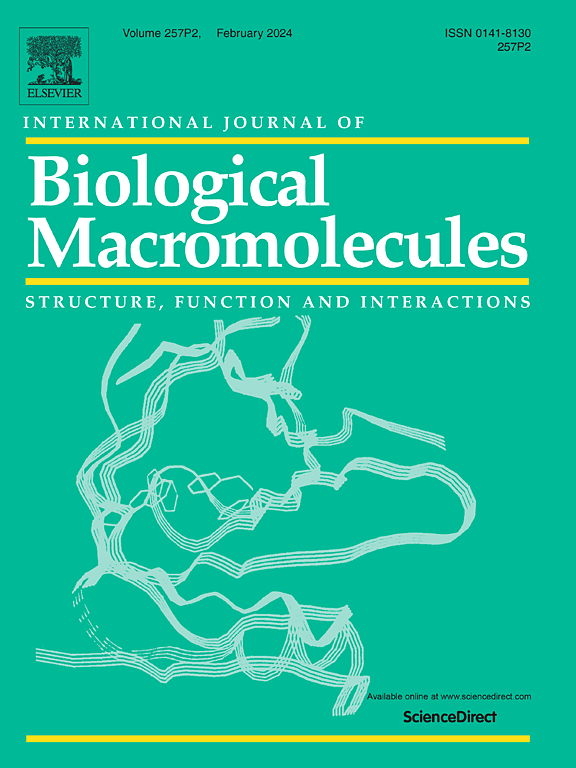High–strength, solvent–resistant carboxymethyl chitosan composite rubber based on dual covalent crosslinking network and hydrogen bond network for multi–functional sensing
IF 7.7
1区 化学
Q1 BIOCHEMISTRY & MOLECULAR BIOLOGY
International Journal of Biological Macromolecules
Pub Date : 2025-04-02
DOI:10.1016/j.ijbiomac.2025.142437
引用次数: 0
Abstract
In order to prepare natural polymer composite rubber with excellent mechanical properties, solvent resistance and electrical conductivity, and to apply it to multifunctional sensing. In this study, an environmentally friendly and effective strategy was employed to solve these problems. Carboxymethyl chitosan composite rubber was prepared by introducing the dual covalent crosslinking network into carboxy nitrile butadiene rubber via amide and radical reactions, followed by blending with carboxymethyl chitosan to introduce a hydrogen bonding network. The tensile strength of the prepared composite rubber was increased by 45 times, the crosslink density was increased by 405 times, the mechanical properties and solvent resistance were significantly improved, and the electrical conductivity was also obtained. Based on these excellent properties, carboxymethyl chitosan composite rubber can be used in strain sensors to detect human movement, and realize information encryption; it can also be used in humidity sensors to detect human respiration, environmental humidity and industrial pipeline safety. The nature polymer composite rubber prepared in this work will have great potential for application in flexible electronic devices.
求助全文
约1分钟内获得全文
求助全文
来源期刊
CiteScore
13.70
自引率
9.80%
发文量
2728
审稿时长
64 days
期刊介绍:
The International Journal of Biological Macromolecules is a well-established international journal dedicated to research on the chemical and biological aspects of natural macromolecules. Focusing on proteins, macromolecular carbohydrates, glycoproteins, proteoglycans, lignins, biological poly-acids, and nucleic acids, the journal presents the latest findings in molecular structure, properties, biological activities, interactions, modifications, and functional properties. Papers must offer new and novel insights, encompassing related model systems, structural conformational studies, theoretical developments, and analytical techniques. Each paper is required to primarily focus on at least one named biological macromolecule, reflected in the title, abstract, and text.

 求助内容:
求助内容: 应助结果提醒方式:
应助结果提醒方式:


